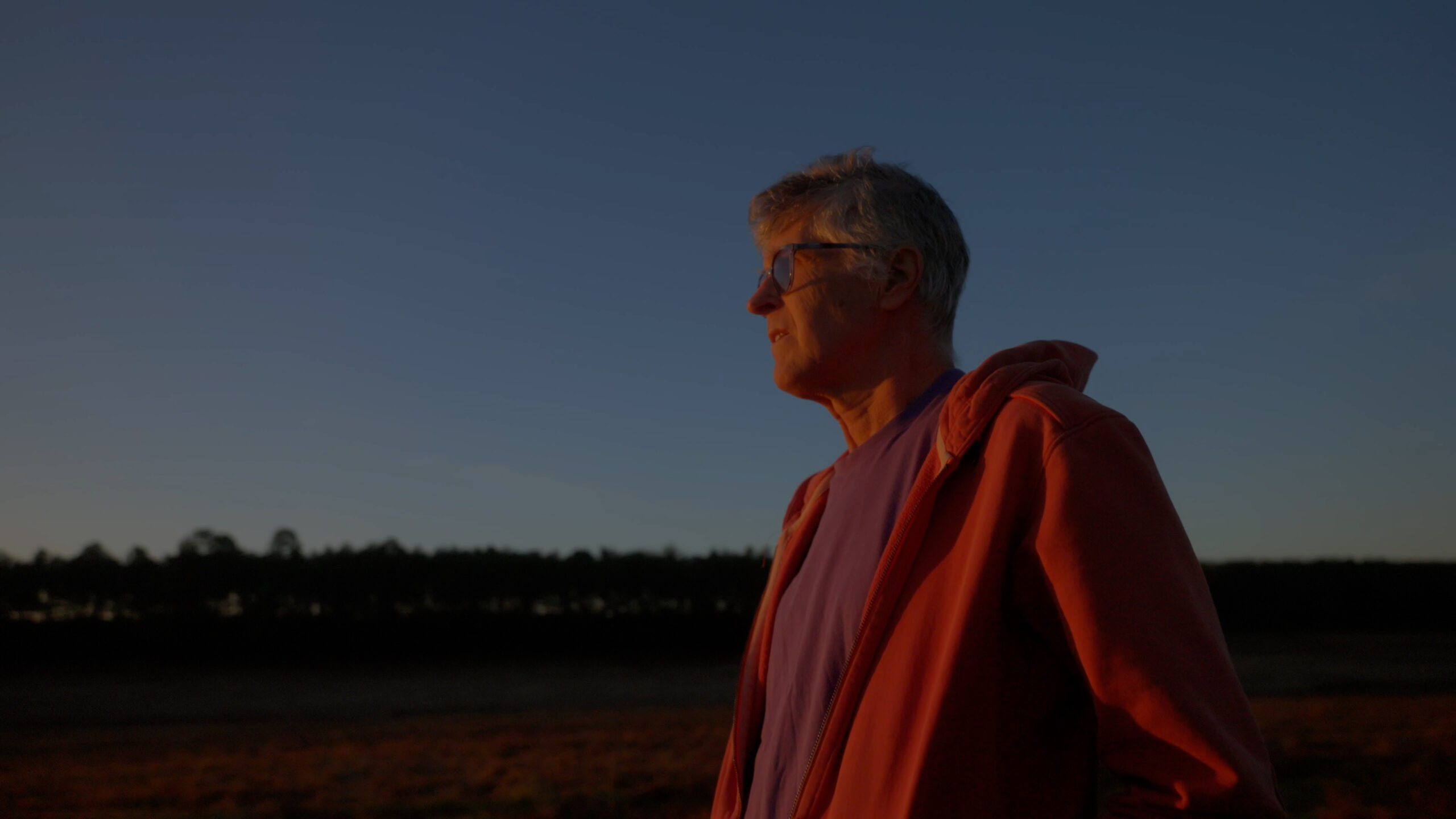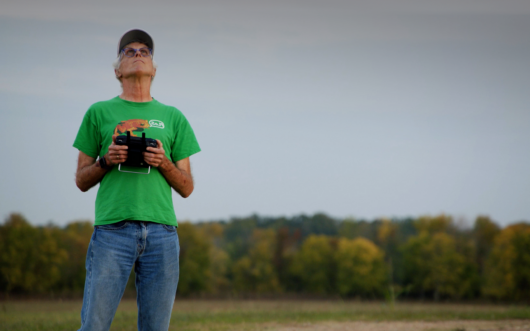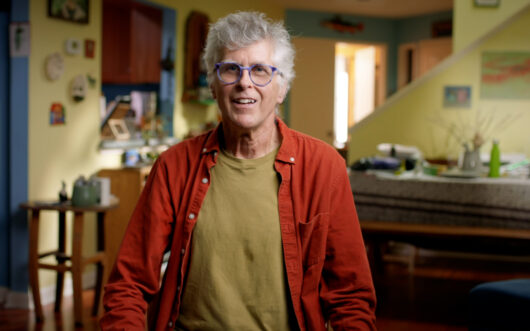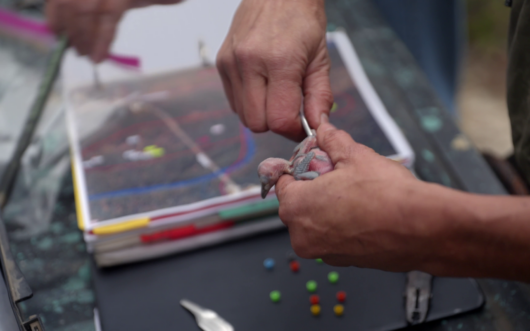Pat Brown is no stranger to coming up with innovative solutions to big challenges. Trained as a biochemist, he helped research the HIV virus in the 1980s and invented a technology called the DNA microarray in the 1990s that became a powerful tool in cancer research.
But in 2009, he decided to take on his most ambitious challenge yet — animal agriculture. Brown left his prestigious lab and Stanford and founded Impossible Foods with the mission of creating a delicious meat alternative to reduce the environmental strain of this industry, which claims 40% of the ice-free land on the plant.
Brown debuted the Impossible Burger in 2016. Now, he’s taking his mission a step further by researching how to rewild the ranches that are no longer needed. His 1,000-acre “Carbon Ranch” in Arkansas, planted with thousands of trees this year, will serve as a living rewilding laboratory where Brown and his colleagues track carbon sequestration and the return of biodiversity to the land.
Wild Hope recently sat down with Pat Brown to talk about what motivated him to take on the industrial animal agriculture industry, his quest to create a tasty and eco-friendly plant-based burger, and what he’s hoping to teach the world with his Carbon Ranch.
The following interview has been edited for length and clarity.
Wild Hope: Of all the environmental problems in the world, why did animal agriculture stand out as the one you wanted to take on?
Pat Brown: The use of animals as a food technology is overwhelmingly responsible for the absolutely precipitous collapse of global biodiversity, which is probably a greater threat to future generations — or even present generations — than climate change. It gets virtually no attention, but it’s an absolute ongoing catastrophe that I think is, you know, it’s not just sad that these ecosystems are collapsing and animal populations are collapsing and stuff like that. It’s that the biosphere that keeps our planet viable is being trashed because people take it for granted.
When I realized about the biodiversity impact, I felt like, okay, I’ve got to really figure out whether I can do something about this. And one of the things I did was I calculated what would be the impact on global heating if we phase it out.
What I realized was that the amazing thing about the greenhouse gas emissions from animal agriculture in particular, is that, unlike fossil fuel emissions, they’re completely reversible. Okay, so that’s a unique characteristic of that technology. You can’t turn CO2 back into coal or crude oil or anything like that. But the emissions from animal agriculture, all the emissions through history, are reversible. If we could make it go away, it would put the brakes on climate change for 30 years and and, you know, have massively offset greenhouse gas emissions. And I just felt like, Okay, well, I can’t just do nothing.
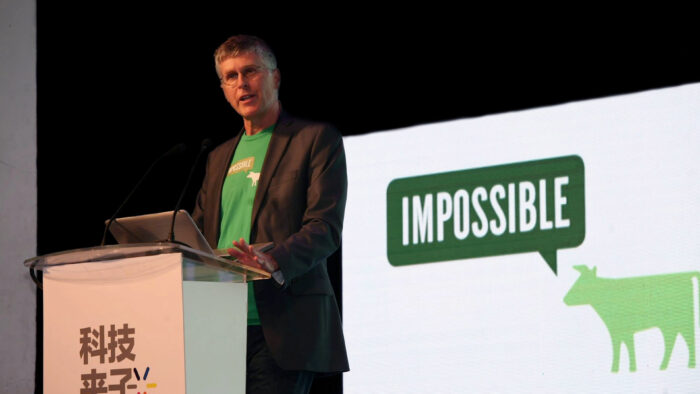
WH: Why did you feel like creating a plant-based alternative to the beef burger was the best use of your efforts?
PB: As a biochemist, I felt like, okay, well, fundamentally, the problem isn’t that people love these foods, it’s that we’re using the wrong technology to produce them and and there ought to be a better way to produce foods that deliver everything that those consumers care about without using animals with vastly lower environmental footprint and better nutrition and many, many improvements. Because, you know, it’s just this ancient, prehistoric technology.
Given everything that we know today, what’s the best way to make those foods? It would not be using a cow or pig or a chicken. And so that meant it was a technology problem, basically, and particularly, a biotechnology problem.
The hard part is the deliciousness. It’s the very specific things, sensory pleasures that people get from those foods — that’s the hard part. But those sensory pleasures just come from the molecular properties of that food, okay? And it’s just like the kind of problem I would study before I got into this.
WH: So you were able to use your biochemistry background to help crack that code and launch the Impossible Burger, but what about the environmental cost? How does a meatless burger compare to a beef patty?
PB: We commissioned an independent auditor basically to go through all our data and do what’s called a lifecycle analysis, so that we could directly compare all the metrics.
The answer was, it uses less than 1/25th the land area. From a biodiversity standpoint, that’s pretty much the whole story, is that if you could reduce the land footprint of beef production by producing it differently, you massively increase the land available for ecosystem recovery and restoration and carbon capture.
It was 1/10th the greenhouse gas emissions, 1/10th the water, and less than a tenth of the fertilizers and agrochemicals.
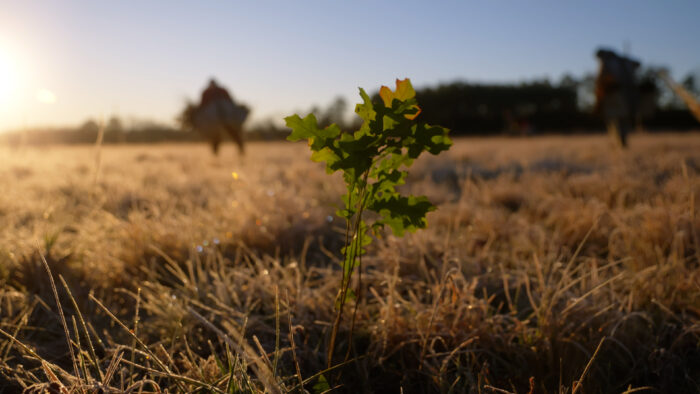
WH: So now you’ve come up with a way to produce a meat substitute using less land and fewer resources, and you’ve started to think about how to best use the land that is no longer used for ranching, right? Tell me how that led to you purchasing a 1,000-acre “Carbon Ranch.”
PB: So if you get rid of the demand for meat products, you have two problems you need to solve. Number one, what happens to the people who make their living raising animals for food? Obviously they’re not the bad guys. THey’re just trying to make a living, doing an incredibly hard, dangerous job. So, what happens to them? Secondly, you don’t realize the benefit of eliminating the use of land for animal agriculture unless you use that land to restore the native ecosystems and recover carbon from the atmosphere.
Now, suppose the way you solve this problem requires that you restore a functioning native ecosystem on land that’s been degraded by cattle grazing. How do you do that? No one knows. I’m not kidding. We know some things that sometimes work and and sometimes don’t work, and stuff like that. But if you were asking, “What should I do here to make sure it succeeds?” No one has the answer. So I felt like, okay, well, we’ve got to start doing experiments.
I think these are the most important experiments for the future of our planet, because we’ve massively destroyed these ecosystems, and we have the opportunity to restore them. So that’s why I decided we needed to buy the ranch.
WH: What do these experiments look like? What are you doing at the ranch now, and what are you hoping to learn?
PB: So, [the Carbon Ranch] was a ranch with like 800 cows on it when we bought it. And then the guy who owned the land just moved his cows to some other land he owned nearby. So we cleared the land and gave it the opportunity to recover. And then we looked at all the variation within the ranch, like the proximity to water, the type of soil, and the topography, and divided it into three major sectors.
One of which, we did no intervention. Then we divided the other two-thirds of it, and into one third we planted a mixture of about 30 different native tree species. And the other third, we planted a fast-growing timber species. We planted 330,000 trees in February of this year.
The product we want from this experiment is a playbook for farmers and ranchers that basically tells them how to do this, and how to make a living by doing this. Because they’re ultimately going to be the ones that are carrying out the transformation, and we want them to be able to make a really good living from it.
The best way for that to happen right now is through carbon markets. Because if you’re capturing carbon through reforestation, you can get paid a decent amount of money. And if it works well, a lot of farmers are going to opt to do that, so we need to figure out how well that works.
WH: What about people who don’t necessarily have huge pieces of land to rewild? What are the most important things that they could do in their own lives to combat the biodiversity crisis?
PB: The first order of business is to do your best to learn something about the problem. The second thing is that the food system and animal agriculture and the fishing industry are overwhelmingly responsible for the problem. So to any extent, if you can reduce your consumption of animal products — particularly of beef and milk — that will be the single biggest thing you can do to reduce your biodiversity and climate footprint.
